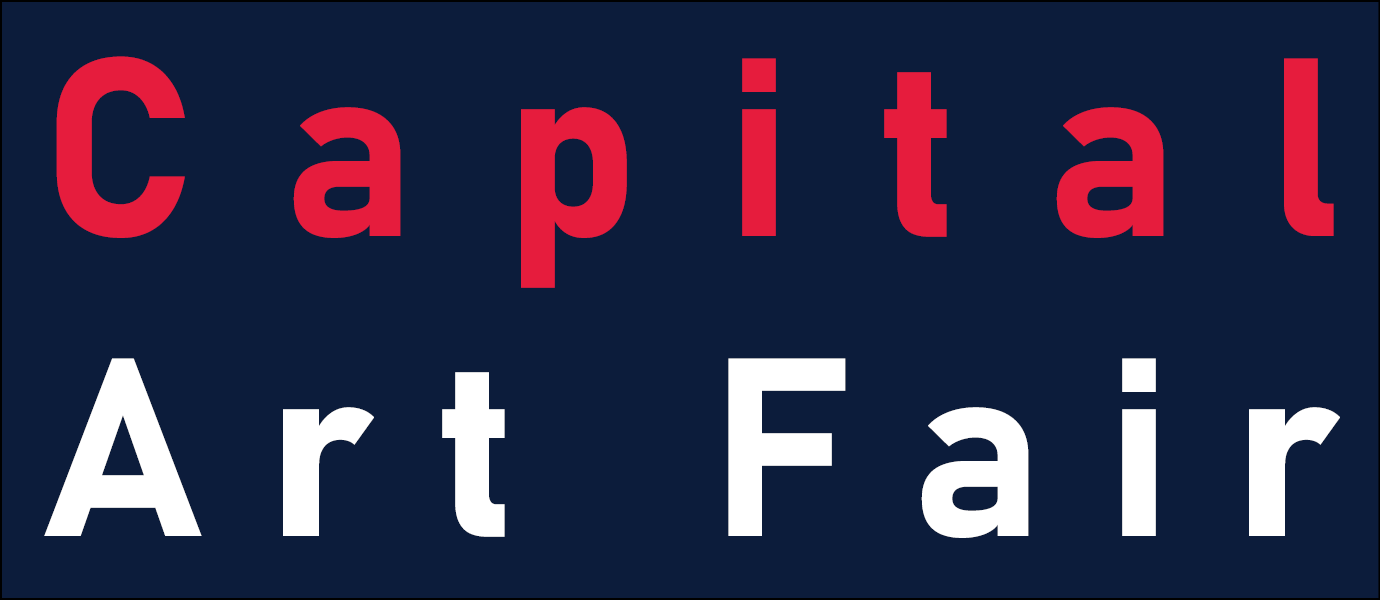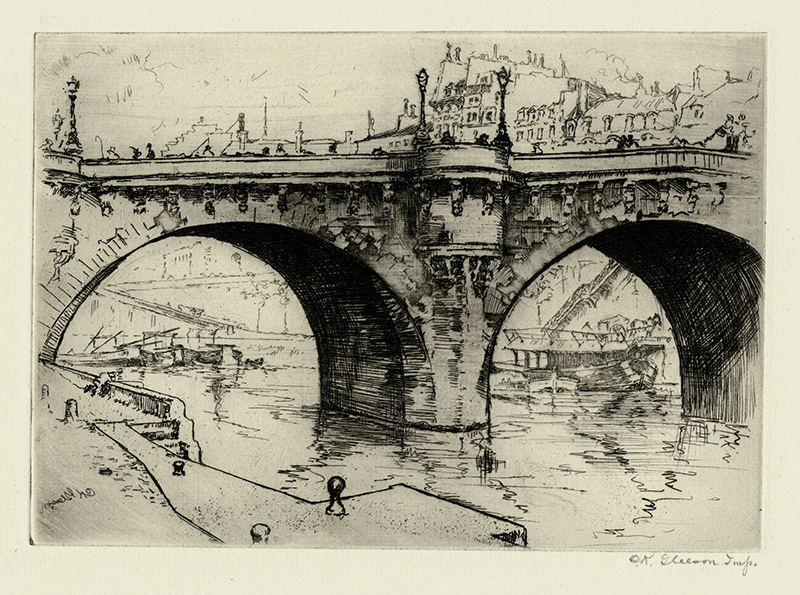An Old Piece of Masonry: Pont Neuf, Paris is an etching created in 1913 by American artist, Charles K. Gleeson. It is pencil signed and inscribed Imp. in the lower right margin. An Old Piece of Masonry: Pont Neuf, Paris was printed by Frederick T. Reynolds in an edition of 250 for the Chicago Society of Etchers. The references for this etching are Chicago Society of Etchers Presentation Print 2 and Cedar Rapids 2. The paper is an ivory laid and the platemark measures 4-15/16 x 7 inches.
An Old Piece of Masonry, Pont Neuf, Paris was published by the Chicago Society of Etchers in 1913 as their 2nd presentation print. It was included in a portfolio which included an essay by Thomas Eddy Tallmadge entitled “Two Etchings of a Bridge.” The second etching in the portfolio and the 3rd presentation print was Roi Partridge’s L’Île de la Cité.
The Pont Neuf (New Bridge) was begun in 1578 and, despite its name, is the oldest bridge spanning the Seine in Paris. The bridge is composed of two separate spans, one of five arches joining the left bank to the Île de la Cité, another of seven arches joining the island to the right bank. For centuries the Pont Neuf, filled with shop and traffic, was the center of Parisian life. The bridge’s foundations were completely rebuilt under Napoleon III, together with the arches of the long span, which were made elliptical. During this construction the shops were removed.
Charles K. Gleeson, painter and printmaker, was born to John and Rose Mullen Gleeson on 5 March 1878 in St. Louis, Missouri. He studied at the St. Louis School of Fine Arts between 1904 and 1907, at the Art Students League in New York in 1908, and at the Académie Colarossi and the Académie de la Grande Chaumière in Paris from 1909 to 1910. While living in Paris he exhibited etchings at the Paris Salon. After completing his studies, Gleeson traveled to the Netherlands, Spain, and Mexico.
Gleeson returned to St. Louis and became an art instructor at the Central High School and married the sculptor Adele Schulenburg on 31 October 1914. In the 1930s, the couple moved to Connecticut. He was a member of and exhibited with the Chicago Society of Etchers, the Society of American Graphic Artists, and the St. Louis Art Guild. Gleeson‘s work was also exhibited in the exhibition American Art Today at the World’s Fair New York 1939, the Whitney Museum of American Art, and the Connecticut Academy of Fine Arts from 1944-1958. In May 1917, Gleeson and Schulenburg had a two-person show at the Saint Louis Art Museum.
The work of Charles K. Gleeson is represented in the collections of the Art Institute of Chicago, Illinois; the Indianapolis Museum of Art, Indiana; the British Museum, London; the Carnegie Museum of Art, Pittsburg, Pennsylvania; the Toledo Museum of Art, Ohio; and the National Gallery of Art and the Smithsonian American Art Museum, Washington, D.C.
Charles K. Gleeson died in Meriden, Connecticut in April 1971.



